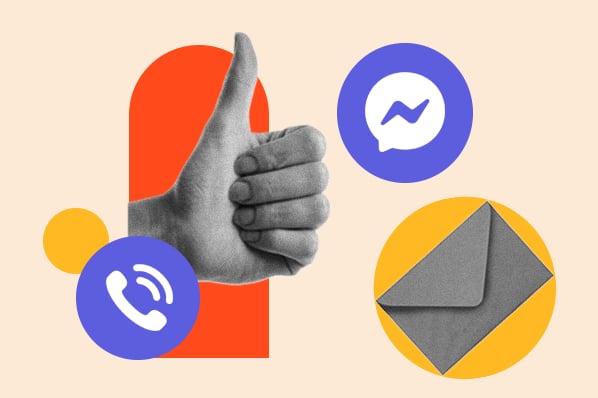We've all had a bumpy run-in with a business or customer service team at some point. Most of us understand that small blips happen, but bigger ones leave scars on both customers and the companies involved.
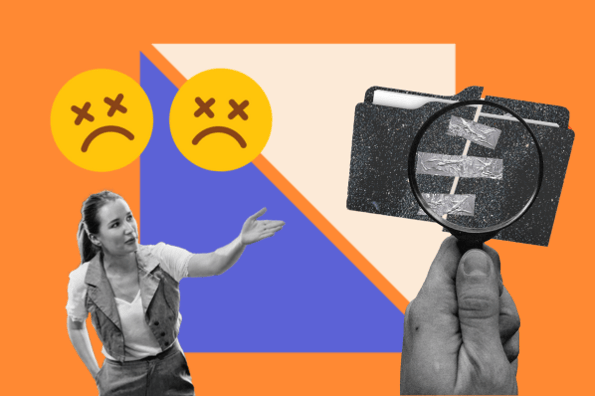
Customer experience fails are big mistakes. We're not talking about an awkward phone call or a miscommunication around a price tag. We're highlighting major fails that are hard to forget and even harder to forgive for those involved.
The good news is that there's a lot to learn from them. And, whether you're a growing business or as large as the ones below, you can keep these situations in mind so your company will know how to navigate them -- and more importantly, avoid them altogether.
9 Customer Experience Fails
Below are some common customer experience fails that real businesses have experienced in the past few years. As a former customer support rep, there's a lot to unpack with each one. So, let's review each situation and I'll tell you how I might have handled this if I were still working in customer success.
1. Forgetting That Customers Come First
Fulfilling customer needs and helping people achieve their goals should be your team's top priority. However, sometimes customer success managers (CSMs) prioritize their company's growth over customer success. This is one of the most common customer experience mistakes because your CSMs want to push customers down your sales funnel.
While doing so might be beneficial for your company, it doesn't promote customer success and will lead people away from your business. Instead, caring about your customers and showing them how to achieve their goals with your product or service is the best way to avoid this mistake.
Company Example: MoviePass
MoviePass was a subscription-based business that let customers see one movie a day for $10 a month. But, after receiving over 1,500 complaints to the Better Business Bureau, the company suspended its service and is "unable to predict if or when the MoviePass™ service will continue."
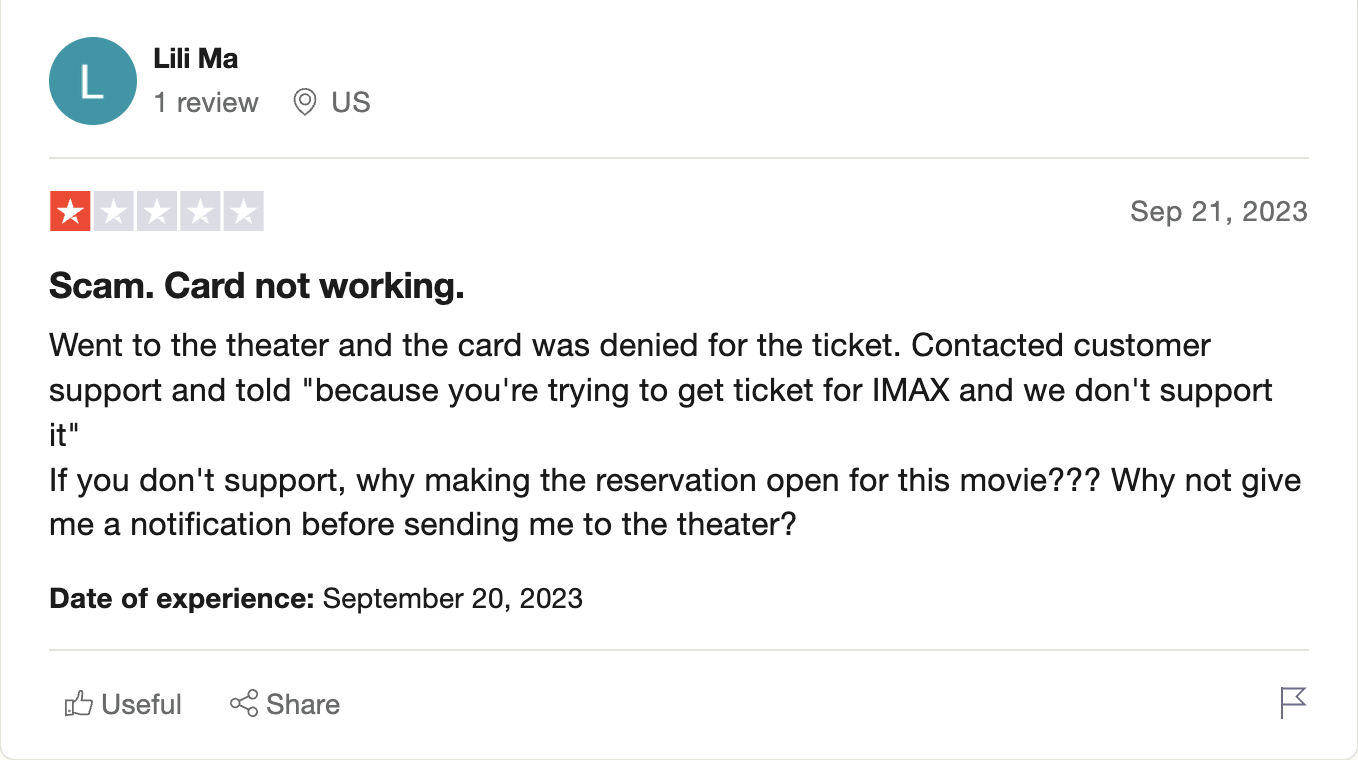
One of the complaints that went viral was from a San Francisco customer whose account was suddenly canceled without notice. After hunting to find a seemingly hidden customer support number, she was informed that her account was terminated due to a violation of terms and agreements. This customer had gone to see a "premium movie" which was against the subscription policy and resulted in cancellation without a refund.
How I would handle this:
This is a great example of putting the company's success before the customer's. MoviePass should have made its policies clear to customers when they signed up and provided resources that explain what qualifies as a "premium movie."
And, if customers are still violating policies, MoviePass's support team should have contacted them directly to inform them that they were breaking the rules. Instead of simply terminating the accounts, they could have provided proactive customer service and cleared confusion surrounding its policies while keeping the customer's long-term business.
2. Not Having a Dedicated CSM Leader
CSM leadership drives an efficient customer experience strategy. These employees regulate team performance and give CSMs all the tools they need to assist customers. If you want to grow your business, make sure to find the most suitable person to take charge -- especially when you need it most.
Company Example: American Airlines
Airlines have notoriously bad reputations when it comes to customer service -- hence the inspiration for this blog post.
Airline employees work in high-stress environments and have to be proficient problem solvers. With all of the protocols and policies that are enforced at airports, it's not surprising that some companies are bound to make mistakes.
That's exactly what happened to American Airlines when a flight attendant asked a passenger to get off a plane. The passenger was traveling with a $30,000 cello that was apparently "too big" for the aircraft. So, she was asked to board another plane leaving one hour later. But, that plane's crew wouldn't let her on, either, and soon she was surrounded by airport police because the staff thought she was "not understandable."
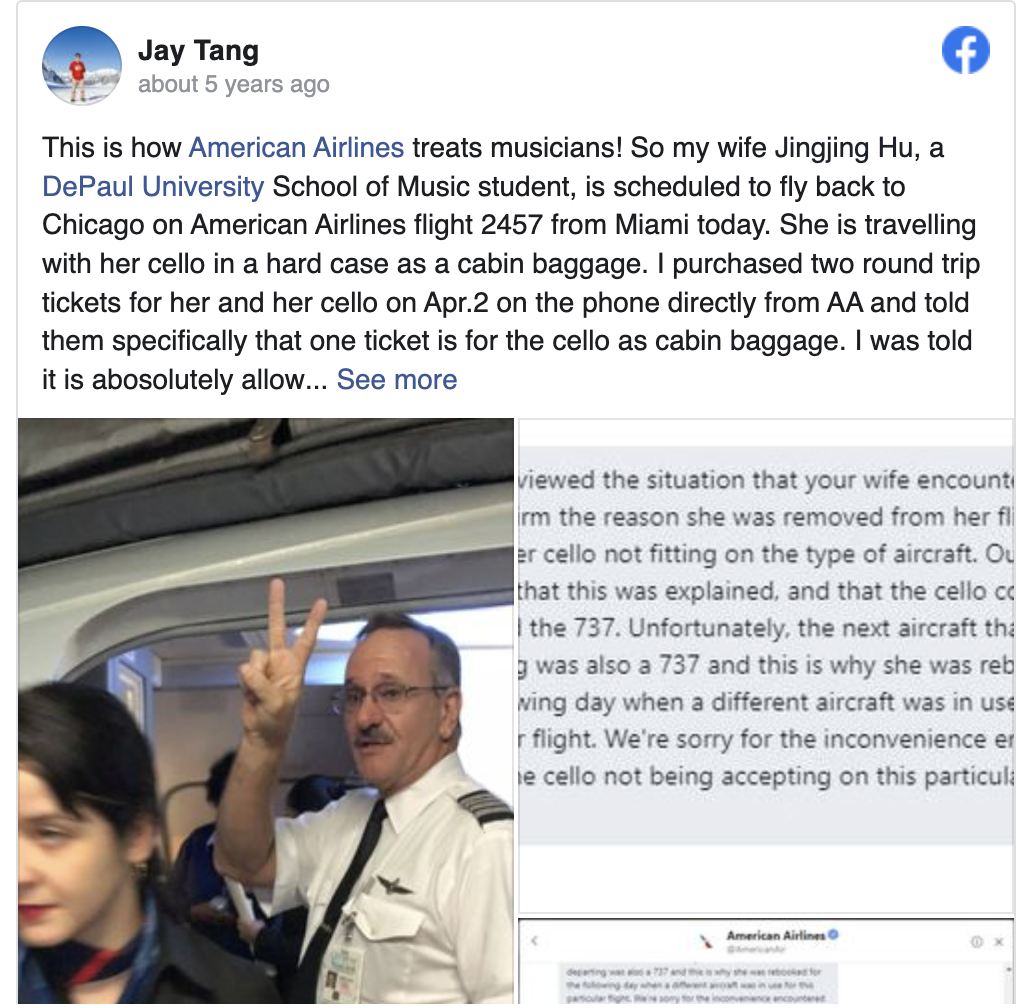
Turns out, the customer was right all along. The airline's policies did permit the instrument and she could have flown on her original plane.
How I would handle this:
This situation shows why it's so important to have a dedicated CSM leader. If your company has a lot of policies, protocols, and rules, your staff should know each one by heart. If not, you should have at least one manager who can act as an immediate resource whenever a dispute like this occurs.
Customer service is a team sport and sometimes someone just has to step up and own the situation. In this case, the customer was put on a carousel ride of faces to interact with which only heightened the confusion and stress of the situation.
3. Lacking Proactive Customer Service
Customer service and customer success often work in tandem to ensure your customers have the best experiences. However, customer support and success differ from one another on a fundamental level.
Customer support is about reacting to inquiries and providing answers when called upon. Customer success, on the other hand, is a preemptive measure meant to track and solve problems before they occur. Compared to customer support, customer success anticipates future roadblocks and offers immediate solutions.
When customers feel like you're constantly looking out for them, they're more likely to become loyal supporters of your company and will contribute to customer acquisition through advocacy. According to Userlane, big SaaS companies, like HubSpot, generate 70-80% of new customers through word-of-mouth marketing.
Company Example: Target
A few years ago, the retail brand, Target, experienced a situation where a Facebook user started a new page posing as Target's customer service team. The user would respond to posts on Target's page and mock customers who had complaints about the company's new, gender-neutral signage.
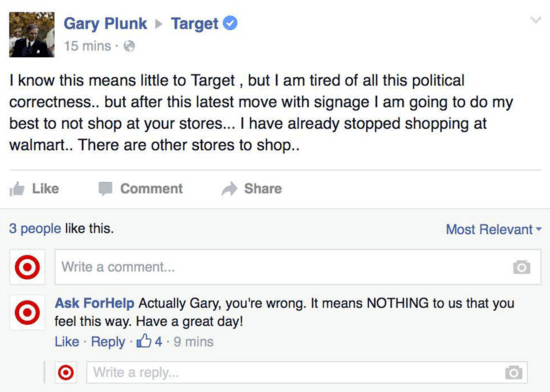
While the anonymous crusader was defending the brand, the account wasn't sanctioned by Target and people were mistaking it for the company's actual customer service team. So, the Facebook user could potentially post statements, comments, and content that didn't reflect the brand's values.
How I would handle this:
In this case, Target should have been proactive by assigning customer service reps to monitor social media channels for fakes like this. Since the company was making changes to its branding, it should have anticipated that customers would have comments or opinions that would be voiced on social media. Even though Target might not have stopped this user from creating a fake account, they would have caught it sooner and could have prevented it from going viral and causing controversy.
Proactivity is the foundation of a robust customer success strategy. If you want your customers to realize the real value of your company, you should communicate with them regularly and stay on top of the channels they're working in.
As one of the core tactics of growth marketing, investing in conversational marketing tools will allow you to answer your audience’s questions and build a solid relationship that goes beyond live chat and emails. Offering guidance and support throughout their customer journey is your secret weapon to making them feel valued.
4. Over-Engaging Your Customers
There'll be a time when you'll feel the need to communicate with customers more frequently. After all, customer success is all about talking to your customers and finding out what they want.
However, if you over-engage them, you might end up annoying them rather than helping them. Over-engagement stems from uncertainty, which means if a customer is silent about their experience, you'll try to contact them to discover whether they're having issues or not. Over-engaging with them out of fear of losing them, though, is a common mistake that you should avoid.
Being silent doesn't necessarily mean that your customer had a bad experience. Nevertheless, CSMs will sometimes send multiple messages to a customer to make sure that this isn't the case.
Spending time on such customers may also cause problems for your customer success operations. For instance, your CSMs might waste time contacting a customer who doesn't need assistance, thus neglecting someone else who does. Each customer is different and unique, so, try to find an engagement formula that will neither irritate your customers nor be time-consuming for your agents.
Company Example: Comcast
Customer success is about fulfilling customer needs, even if that need is canceling their account. So, if a customer wants to terminate their business, you can make your best pitch to convince them otherwise, but ultimately, you should provide the steps they need to accomplish their goal.
A Comcast rep did the opposite when they encountered a customer who wanted to disconnect their account. Instead of helping them through the cancellation steps, the rep tried to persuade them that Comcast would be better than any competitor that they tried. The rep's commitment to keeping the customer engaged resulted in a notably unpleasant experience that attracted a lot of negative media attention.
Here's the soundbite if you want to listen to that cringy customer service call.
How I would handle this:
If I were the rep on the phone, I would go on hold, take a step back, and reassess if I am solving for the customer or if I am solving for my own needs. As a customer, I would be confused as to why a support rep would want to keep me on Comcast's service rather than just helping me cancel.
So, as the rep, I need to separate my company's business goals from the customer's immediate needs.
If a customer wants to cancel, that shouldn't be a reflection of the customer support rep. In fact, our co-founder, Dharmesh Shah, has a really interesting post about why you should let customers cancel as soon as they ask for it. TLDR: it's better for them and your business, and they might come back if they really need you.
5. Setting Inconsistent Expectations
Promising things that are impossible or unrealistic to deliver will cause customers to reconsider your trustworthiness. For instance, if you set a deadline and fail to meet it, customers will lose confidence in your ability to accomplish goals on time.
Setting proper expectations for when and how tasks will be completed sets a standard for customers to judge you on. If you promise them one thing but fail to deliver it, they'll think you either forgot or don't value their needs.
A good rule of thumb is that customers will prefer a solution later than never at all. And, your team can soften the blow by reaching out to them immediately when they know a deadline or expectation can't be met. The more time you give a customer to prepare, the more likely they'll be understanding of the situation.
Company Example: Amazon
Amazon has a great track record of customer service. But, that doesn't mean it doesn't make mistakes every now and again.
For example, one loyal Amazon customer, Barbaram was buying toilet paper when she noticed that she accidentally purchased an $88 item with a shipping cost of $7,455. Unfortunately, by the time she caught the error, it was too late to cancel and the package was delivered. So, she called Amazon customer service, hoping to resolve the issue.
Here's Barbara and here's her $7,500 toilet paper:

Being a long-time Amazon customer, she expected to have things straightened out rather quickly. However, after complaining six times and even writing a letter to the CEO, Jeff Bezos, she was told repeatedly that the company would not refund the purchase because it was delivered on time and undamaged. It wasn't until two and a half months later when the customer got the story featured on the news that Amazon decided to reimburse the purchase.
How I would handle this:
This feels like a situation where common sense should have prevailed, right?
I gave Amazon's service line a call and was immediately directed to an automated assistant. For the record, that's awesome and AI assistants should be used by any customer service team.
However, situations like this call for human response. If Barbara had a way to directly contact a human agent, she probably would have got the issue solved alot faster -- saving her some money and Amazon the customer service crisis.
The lesson here is that good customer service isn't a one-time feat. It's something you should be constantly trying to provide no matter how long a customer has been with your business. Remember, studies show that it only takes one poor experience for a customer to churn.
6. Creating Customer Success Silos
If you're familiar with data silos, then you know when departments and teams don't share information and goals, you can't provide smooth experiences to customers.
Having a customer success silo will not only affect your customer support but your entire organization. For example, if your sales, marketing, and customer success don't exchange information, then you won't be able to combine customer data. This combination will allow you to target specific customers and see how they benefit from your product.
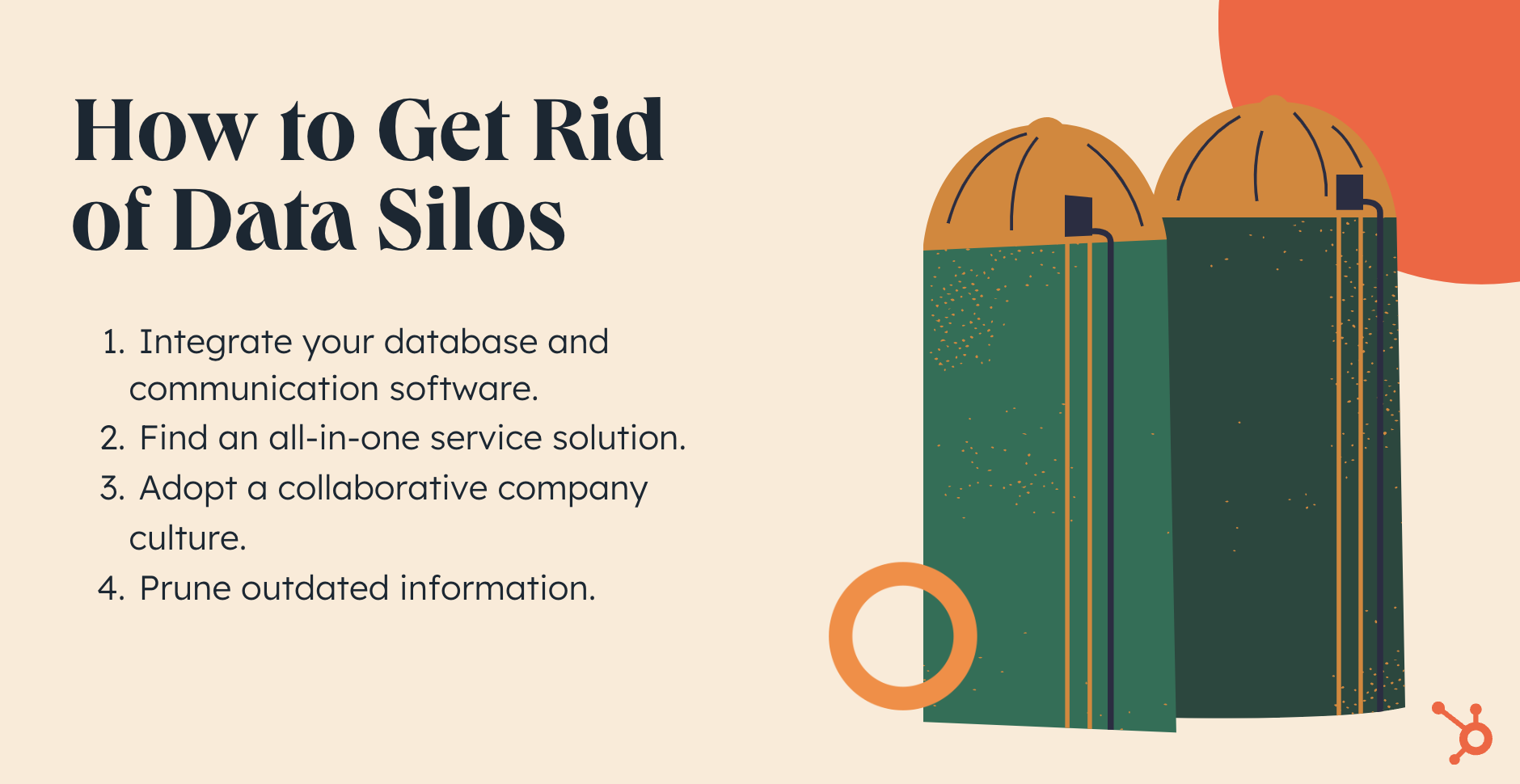
Breaking down silos will increase cross-functional interaction that will help your company fulfill strategic goals. Cross-team collaboration is necessary to promote seamless customer experiences. So, if you have a customer success silo in your business, try to break it down as soon as possible.
Company Example: Spectrum
Spectrum is an internet provider that caters to both businesses and individual subscribers. It discovered a customer success silo when one customer called to schedule a maintenance visit to set up her internet.
After the maintenance employee failed to show up at the scheduled time, the customer called the support team to make sure the appointment had not been canceled. The support team assured her that the employee was on his way and would be there soon. Two hours later, the maintenance worker arrived, and then left after finding the main entrance to the building was locked.
So, the customer called the support team again only to find that the next available appointment time wasn't for another 15 days. And, to make matters worse, Spectrum was still going to charge the customer even though she didn't have her internet working. Eventually, this led to the customer canceling her subscription and buying from another competitor.
How I would handle this:
If Spectrum had aligned its customer support and maintenance teams, it could have avoided this instance of customer churn. Service reps could have alerted the maintenance worker about the customer's complaint, and maintenance could have updated the service team that they were unable to get into the building.
If I was on this support team, I would have used a help desk or an internal messaging system to contact the maintenance team. If I couldn't get in contact, I would leave a voicemail or note asking that team to reply as soon as possible. Sharing time-sensitive information between teams helps employees make customer-centric decisions because they have more context regarding the situation.
7. Generalizing Individual Customer Outcomes
Creating a formula that fits everyone's needs can save you time. However, if you apply the same logic to customer success, you'll end up with dissatisfied customers who receive generic guidance.
Personalization is a crucial element of meeting customer needs, so offering canned experiences will counteract the purpose of your strategy. Your CSMs need to treat every customer outcome separately, responding according to the needs and wants of each individual.
Make sure that your team has sufficient knowledge of the customer they're working with. Take into account their goals, and don't forget to set specific KPIs for every individual contact in your CRM. Doing so will help you respond to your customers faster and offer personalized guidance.
Company Example: Samsung
Below is a situation that unfolded between a customer and a Samsung customer service rep. The customer is calling because, according to Samsung's policies, he needs to be home to sign for a package. But, the customer can't afford to skip work to wait for a package.

How I would handle this:
In this case, the Samsung service rep should have reached out to a manager to see if there was any way to make an exception for this customer. Even though it's against company protocol, adjusting the shipping schedule to meet the customer's needs would have resolved the issue and showed genuine care for customer success. Instead, the company stuck to its policies which resulted in a viral Reddit thread.
8. Approaching Bad-Fit Customers
Your customer success team will strive to contact as many customers as possible and every prospect differs in terms of potential and profitability. Building relationships with bad-fit customers, though, will result in losing valuable time and money.
Bad-fit prospects can wreak havoc on your business, so the best course of action is to identify them early and cut them loose. What you need to combat the problem is to work closely with your sales and marketing teams. These teams offer valuable information about your prospects, allow you to spot bad-fit leads, and prevent them from turning into costly customers.
Company Example: Proposify
Here's one example that has a happy ending. Kyle Racki, CEO of Proposify, noticed a customer was constantly complaining about his software. He noted that the customer wasn't abusive, but rather sent complaints "that are impossible to fulfill."
After weeks of receiving continuous complaints, Racki decided that the stress being put on his customer success team wasn't worth the return they were getting from the customer. So, he sent this email to the customer.
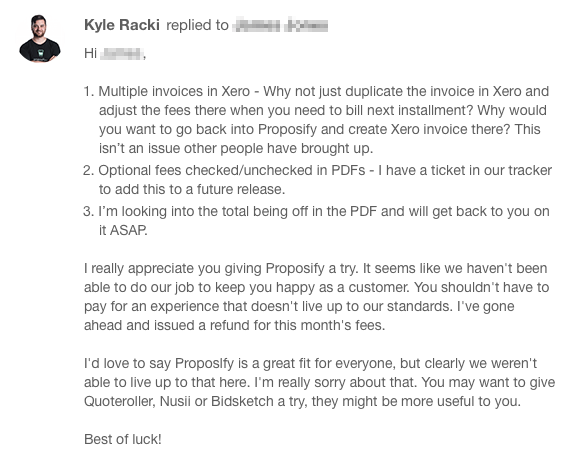
I don't like the term "firing a customer," but if you have to cut ties with a client, this is a perfect example of how you should do it. This CEO doesn't attack the customer, instead, he apologizes for his inability to meet their needs. He accepts full responsibility for the situation and even provides a refund along with suggestions for competitors that the customer should try.
To his surprise, Racki got this response.

How I would handle this:
In this case, hats off to Kyle Racki. That took guts and it paid off.
This is a perfect example showing why customer success is always good for a business. Racki sent his message with the customer's best interest at heart, and the customer was delighted with his dedication to their needs. Instead of losing a customer, Proposify gained a loyal advocate and valuable testimonial.
9. Failing to Meet Customer Demand
Is it possible to have too many customers?
No, but it is possible to have customer demand outstretch your customer service resources.
The good news is that this means your business is growing and customers are competing for your product or service. Just remember to be fair to everyone, and keep in mind customer lifetime value. This will help you retain your most valuable customers, regardless of how big your business gets over time.
Company Example: TicketMaster
When your blunder includes Taylor Swift, it's going to be a big deal.
TicketMaster learned this lesson in November 2022 when its servers crashed during the sale of Taylor Swift's Eras tour. Bots powered by third-party sellers purchased most of the tour's tickets forcing fans to pay outrageous prices to see Swift's performance.
fr , like how do you "accidentally release too many tickets" ?? it is quite literally THEIR JOB to evenly distribute… people on my tl were thinking that they were gonna replan and reschedule but they would've said postponed, not cancelled, if that was the case
— gabi | 78, 379 (@gxbicuevas) November 17, 2022
This eventually led to a lawsuit in 2023 as well as a petition to hold vendors like TicketMaster more accountable when these situations occur.
If you want to get a full breakdown of this story, I wrote about this crisis as well as two others that affected TicketMaster this year.
How I would handle this:
This is where customer service leaders need to be skilled in crisis management. When I worked in support, situations like these called for a canned response passed down from management. This response was used as a baseline for communication making it easier to direct customers to the proper support resources.
How to Avoid a Customer Experience Fail
When you start a business, you typically focus on leveraging your sales and marketing teams to reach and engage customers. If you don't, your business isn't going to grow very fast.
But, sales and marketing aren't the only resources you can use to ensure customers will invest their time and money into your company.
Investing in customer success will help you boost customer retention rates and improve customer experience. Not only that but having an effective customer success team will increase customer loyalty and help you carve out space in your competitive marketplace.
In fact, a recent HubSpot report found that 48% of service professionals who used an all-in-one service platform beat their goals in 2022. Additionally, 44% of professionals who "mostly integrated" these tools experienced similar results.
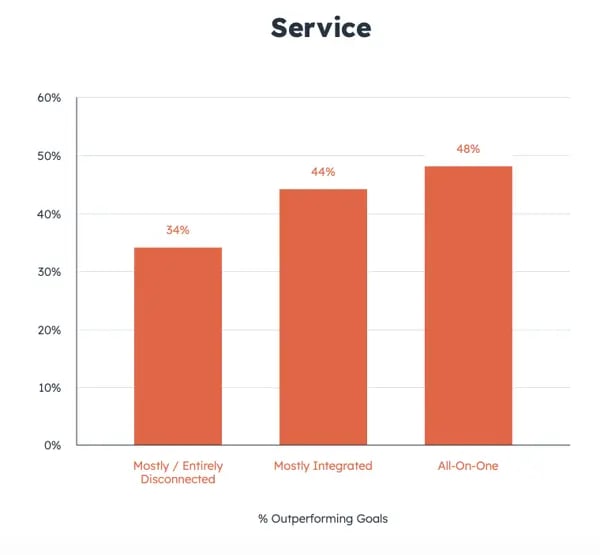
Adopting a new customer success strategy isn't always an easy feat. However, if you want to succeed, you need to invest time and effort to predict what might go wrong before it does. While there are plenty of things that might happen, you should never forget to prioritize your customers, be proactive, keep your promises, break down the customer success silos, and invest in the right leadership.
Improve Customer Experiences Over Time
In my experience, companies that prioritize customer service are less likely to fall subject to one of these pitfalls. If you're open to feedback and proactively trying to solve problems, you're better positioned for success when major roadblocks occur.
Remember, protocol is important, but logic should always prevail when it's a matter of customer needs. If you solve for your customer base, you'll create an experience where users feel valued and will be more loyal to your business.



![How Customer Experience Has Evolved Over the Last Decade [+ 2024 Trends]](png/future-of-customer-experience.png)
![Memorable Examples of AR in Customer Experience [+Tips for Implementing the Technology]](png/augmented%20reality%20customer%20experience.png)
![How to Create an Effective Customer Journey Map [Examples + Template]](webp/customer-journey-map_13.webp)

![How to Implement a Hybrid Customer Service Strategy That Works [Expert Tips]](png/hybrid%20customer%20service_featured.png)
-2.png)

![Customer Experience vs. User Experience: What’s the Difference? [+ Examples]](webp/customer-experience-vs-user-experience_2.webp)
